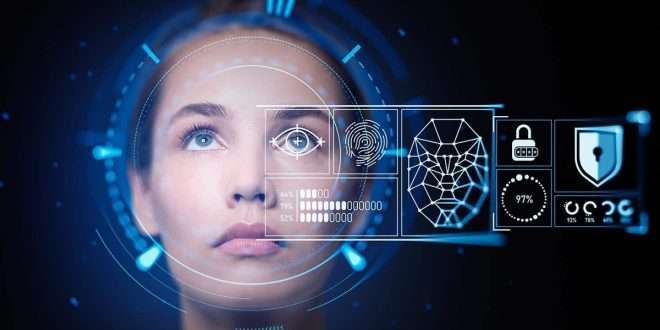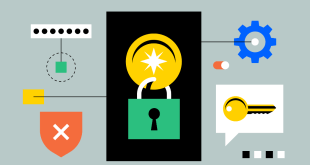In the age of rapidly evolving digital threats, traditional authentication methods are no longer sufficient to protect sensitive information and maintain the security of online systems. As cybercriminals become more sophisticated, we need innovative and foolproof ways to safeguard our digital identities. This blog explores the cutting-edge field of mind-reading authentication and its potential to revolutionize the way we secure our digital assets.
Introduction
In this comprehensive blog, we delve into the realm of brainwave biometrics, an emerging technology that holds immense promise in the domain of authentication methods. Unlike conventional approaches that rely on passwords or fingerprint scans, brainwave biometrics taps into the unique patterns of our brainwaves, making it an exceptionally secure and personalized form of authentication.
Understanding Brainwave Biometrics
Brainwave biometrics involves the analysis of brainwave patterns to verify a user’s identity. The brain generates electrical impulses that form distinct patterns, which remain consistent and unique for each individual. By employing electroencephalogram (EEG) technology, brainwave biometrics captures these patterns and uses them as a basis for authentication.
The Science Behind Brainwave Biometrics
Brainwave patterns are the result of neural activities and are influenced by various factors such as emotions, thoughts, and concentration levels. Researchers have found that brainwave patterns are consistent enough to identify individuals accurately, even across different sessions. The integration of advanced machine learning algorithms enhances the accuracy of brainwave biometrics, making it a reliable and secure authentication method.
Unparalleled Security
One of the most compelling advantages of brainwave biometrics is its unparalleled security. Unlike passwords that can be stolen or forgotten and fingerprints that can be replicated, brainwave patterns are inherently unique and cannot be easily tampered with. Moreover, brainwave biometrics provides continuous authentication, ensuring that the user remains authenticated throughout the session, mitigating the risk of unauthorized access.
Real-World Applications
Brainwave biometrics has a wide range of applications across various industries:
Financial Sector:
Banks and financial institutions can utilize brainwave biometrics to enhance security for online transactions and prevent fraudulent activities.
Healthcare:
In the healthcare sector, brainwave biometrics can ensure secure access to patient records, protecting sensitive medical information.
Government Agencies:
Government agencies can implement brainwave biometrics for highly secure access to classified information and critical systems.
Corporate Environments:
Businesses can employ brainwave biometrics to safeguard their intellectual property and confidential data from unauthorized personnel.
Consumer Electronics:
Brainwave biometrics can be integrated into smartphones and other personal devices, providing a seamless and secure user experience.
Challenges and Future Prospects
While brainwave biometrics offers unmatched security, there are some challenges that need to be addressed:
Hardware Constraints:
EEG devices can be expensive and sometimes cumbersome to use, limiting widespread adoption.
Privacy Concerns:
Collecting and storing brainwave data raise privacy concerns, requiring robust data protection measures.
Despite these challenges, ongoing research and development in brainwave biometrics hold the promise of overcoming these hurdles. As technology advances, we can expect brainwave biometrics to become more accessible and cost-effective.
Commonly Asked Questions
Q1. How accurate is brainwave biometrics compared to traditional methods?
Brainwave biometrics boasts significantly higher accuracy than traditional authentication methods. Studies have shown that brainwave patterns have an accuracy rate of over 95%, far surpassing the reliability of passwords or fingerprints.
Q2. Can brainwave biometrics be hacked or spoofed?
Due to the unique nature of brainwave patterns, it is exceptionally challenging to hack or spoof brainwave biometrics. The real-time authentication further prevents unauthorized access.
Q3. Is brainwave biometrics safe for individuals?
Yes, brainwave biometrics is safe for individuals. The technology is non-invasive and poses no harm to users. The brainwave data collected is anonymized and securely stored.
Q4. Can brainwave biometrics adapt to changes in individuals’ brainwave patterns?
Yes, brainwave biometrics can adapt to changes in individuals’ brainwave patterns over time. The machine learning algorithms continuously update the user’s profile for accurate identification.
Q5. How soon can we expect brainwave biometrics to be widely adopted?
While the technology is still in its early stages, the increasing interest and investment in brainwave biometrics suggest that widespread adoption could become a reality within the next few years.
Final Words
Brainwave biometrics offers an exciting and promising frontier in the field of authentication methods. With its unparalleled security and potential applications across various industries, it has the power to revolutionize how we safeguard our digital identities. As research continues and technology advances, brainwave biometrics is poised to become a cornerstone of digital security in the near future.
 webfily
webfily



